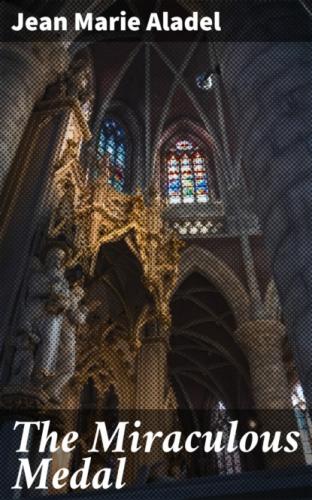Sister Catherine,
DAUGHTER OF CHARITY.
HER BIRTH—EARLY LIFE—VOCATION—ENTRANCE INTO THE COMMUNITY—APPARITION OF THE VIRGIN—THE MEDAL—SISTER CATHERINE IS PLACED AT THE HOSPITAL D'ENGHIEN—HER HUMBLE, HIDDEN LIFE—HER DEATH.
It is an extensively credited assumption, that those who are favored with supernatural communications should have something extraordinary in their person and mode of life. One easily invests them with an ideal of perfection, which, in some measure, sets them apart from the majority of mankind. But if, at any time, an occasion occurs of proving that such an assumption is erroneous, if we discover in these divine confidants weaknesses or only infirmities, we are astonished and tempted to be scandalized. Among the Christians who knew St. Paul only by reputation, some were disappointed on a closer acquaintance; they said his appearance was too unprepossessing and his language too unrefined for an apostle. Were not the Jews scandalized that Our Lord ate and drank like others, that His parents were poor, that He came from Nazareth, and that He conversed with sinners? So true is it, that we are always disposed to judge by appearances.
Not so with God. He sees the depths of our hearts, and often what appears contemptible in the eyes of the world, is great in His. Simplicity and purity He prizes especially. Exterior qualities, gifts of intellect, birth and education, are of little value to Him, and when He has an important mission to confide, it is ordinarily to persons not possessing these qualifications. Thus, does He display His wisdom and power, in using what is weak, to accomplish great results. Sometimes, He chooses for His instruments subjects that are even imperfect, permitting them to commit faults in order to keep them in all humility, and convince them that the favors they receive are not accorded their own merits, but are the gift of God's pure bounty.
These observations naturally prelude Sister Catherine's biography; they explain in advance the difficulties which might arise in the mind of the reader at the contrast between a life so simple and ordinary and the graces showered upon her.
Sister Catherine (Zoé Labouré) was born May 2, 1806, in a little village of the Côte-d'Or Mountains, called Fain-les-Moutiers, of the parish of Moutiers-Saint-Jean. This last place, particularly dear to St. Vincent, was not far from the cradle of St. Bernard, that great servant of Mary, nor from the spot where St. Chantal passed a part of her life, as if in the soil as well as the blood there was a predisposition to certain qualities or hereditary virtues.
Her parents, sincere Christians, were held in esteem. They cultivated their farm, and enjoyed that competency which arises from rural labor joined to simplicity of life. God had blessed their union with a numerous family, seven sons and three daughters.
At an early age, the sons left the paternal roof; little Zoé, with her sisters, remained under the mother's eye, but this mother, God took from Zoé, ere she had completed her eighth year. Already capable of feeling the extent of this sacrifice, it seemed to her as if the Blessed Virgin wished to be her only Mother.
An aunt, living at Rémy, took Zoé and the youngest sister to live with her; but the father, a pious man, who in his youth had even thought of embracing the ecclesiastical state, preferred having the children under his own eye, and at the end of two years they were brought home.
Another motive, also, impelled him to act thus. The eldest sister thought seriously of leaving her family to enter the Community of Daughters of Charity, and the poor father could not bear the idea of confiding his house to mercenary hands. And thus, at an age when other children think only of their sports, Zoé was inured to hard work.
At the age of twelve, with a pure and fervent heart, she made her First Communion in the church of Moutiers-Saint-Jean. Henceforth, her only desire was to be solely His who had just given Himself to her for the first time.
Very soon after, the eldest sister left home to postulate at Langres; and Zoé, now little mistress of the house, did the cooking, with the assistance of a woman for the roughest work. She carried the field hands their meals, and never shrank from any duty however laborious or severe.
Moutiers-Saint-Jean possesses an establishment of the Sisters of St. Vincent de Paul. Zoé went to see them as often as her household duties permitted,
